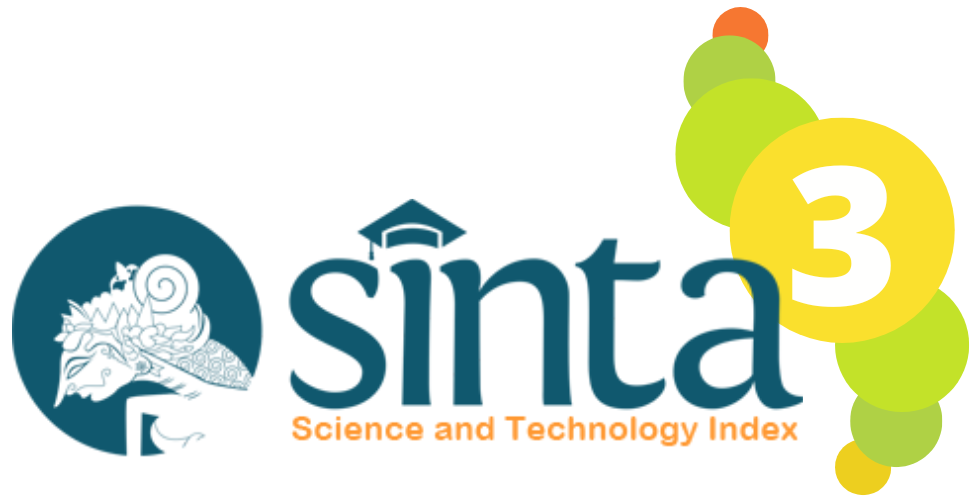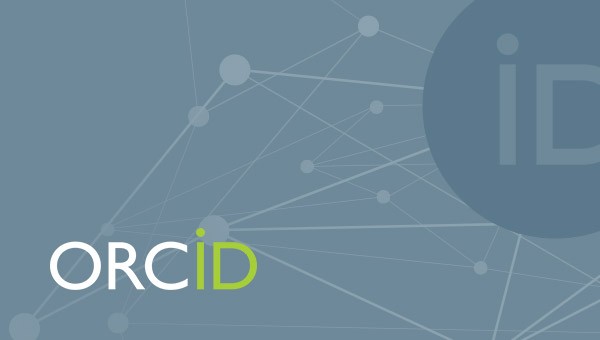Improving Critical Thinking Skills through a STEAM-Integrated SSCS Learning Model on Static Fluid Concepts
DOI:
10.29303/jpft.v11i1.8831Published:
2025-05-20Issue:
Vol. 11 No. 1 (2025): January-JuneKeywords:
Critical Thinking, SSCS, STEAMArticles
Downloads
How to Cite
Downloads
Metrics
Abstract
Critical thinking skills in static fluid materials remains suboptimal, necessitating the implementation of an instructional model that effectively enhances this skill. The STEAM-integrated SSCS learning model presents a novel solution that is still rarely applied in educational settings. This study aims to examine the effect of this model on improving students' critical thinking skills in static fluid materials. A quasi-experimental design with a Pretest-Posttest Control Group was employed, involving Class XI students from SMA Negeri 1 Boyolangu Tulungagung. Participants were selected using a cluster random sampling technique, comprising 37 students in the experimental class (STEAM-integrated SSCS model) and 34 students in the control class (conventional model). The instrument used was a Critical Thinking Skills Test on static fluid material, consisting of nine essay questions validated with a reliability coefficient of 0.625 (medium category). The analysis revealed that the STEAM-integrated SSCS model significantly improved students' critical thinking skills, as indicated by a significance value of 0.000. The experimental class obtained an N-Gain score of 0.678 (medium category), higher than the control class's score of 0.426 (medium category). N-Gain values for each static fluid submatter and critical thinking indicator were also consistently higher in the experimental class. Although improvements were observed, experimental class students still faced difficulties in problem-solving and decision-making, while control class students struggled with hypothesis testing. The model's effectiveness is further supported by a Cohen's d effect size of 1.997, categorized as “large”. Future research should consider optimizing the learning time to complete the miniature products and increasing the number of pre-test and post-test items to allow for more comprehensive analysis of each submatter and could explore the application of STEAM-integrated SSCS across various physics topics to verify generalizability.
References
Agustin, S., Fitraini, D., Rahmi, D., and Fitri, I. (2018). Pengaruh model pembelajaran Search Solve Create Share (SSCS) terhadap pemahaman konsep matematis ditinjau dari pengetahuan awal siswa. Jurnal Cendekia: Jurnal Pendidikan Matematika, 2(2), 42–53. DOI: https://doi.org/10.31004/cendekia.v2i2.1
Alsaleh, N. J. (2020). Teaching Critical Thinking Skills : Literature Review. The Turkish Online Journal of Educational Technology, 19(1), 21–39.
Ambaryani, S. E., Sarwanto, and Budiawanti, S. (2022). Pengembangan Perangkat Pembelajaran Fisika Menggunakan Model SSCS dan Model PQ4R untuk Meningkatkan Keterampilan Berpikir Kritis dan Pemecahan Masalah Siswa. Seminar Nasional Pendidikan, 83–92.
Amirinejad, M., and Rahimi, M. (2023). Integrating Digital Storytelling into STEAM Teaching: Examining Young Language Learners’ Development of Self-regulation and English Literacy. International Journal of Technology in Education, 6(4), 720–735.
https://doi.org/10.46328/ijte.551 DOI: https://doi.org/10.46328/ijte.551
Amiruddin, M. Z. Bin, Magfiroh, D. R., Savitri, I., and Rahman, S. M. I. B. (2022). Analysis of The Application of The STEAM Approach to Learning In Indonesia: Contributions to Physics Education. International Journal of Current Educational Research, 1(1), 1–17. https://doi.org/10.53621/ijocer.v1i1.139 DOI: https://doi.org/10.53621/ijocer.v1i1.139
Aneilla, Y., Nasbey, H., and Permana, A. H. (2023). E-Modul Fluida Statis Berbasis Somatic, Auditory, Visual, Intellectual (SAVI) Berbantuan Flip Pdf Professional. Prosiding Seminar Nasional Fisika (E-Journal), XI, 225–232. https://doi.org/10.21009/03.1102.pf31 DOI: https://doi.org/10.21009/03.1102.PF31
Anshori, A., and Masriyah, M. (2023). Efektivitas Model Pembelajaran SSCS (Search, Solve, Create, and Share) dalam Meningkatkan Kemampuan Pemecahan Masalah Matematis. MATHEdunesa, 12(2), 557–568. https://doi.org/10.26740/mathedunesa.v12n2.p557-568 DOI: https://doi.org/10.26740/mathedunesa.v12n2.p557-568
Arisa, S. N., Khaldun, I., and Safrida. (2021). The Effect of Search, Solve, Create and Share Learning Models to Improve Students ’Critical Thinking Skills on Acid and Basic Titration Materials. Jurnal Penelitian Pendidikan IPA, 7(2), 191–195. https://doi.org/10.29303/jppipa.v7i2.625 DOI: https://doi.org/10.29303/jppipa.v7i2.625
Ashirov, S. A., and Imankulov, N. T. (2024). Teaching Physics Through the Steam Approach. Eurasian Journal of Mathematical Theory and Computer Sciences, 4(1), 15–19. https://www.doi.org/10.5281/zenodo.10516601
Astutik, S., Mahardika, K., Indrawati, Sudarti, and Supeno. (2020). HOTS student worksheet to identification of scientific creativity skill , critical thinking skill and creative thinking skill in physics learning. Journal of Physics: Conference Series, 1465(1). https://doi.org/10.1088/1742-6596/1465/1/012075 DOI: https://doi.org/10.1088/1742-6596/1465/1/012075
Ate, O., Sundaygara, C., and Pranata, K. B. (2022). Pengembangan Buku Ajar Berbasis PjBL dengan Pendekatan STEM untuk Meningkatkan Pemahaman Konsep Siswa Pada Materi Fluida Statis Kelas XI SMA. Jurnal Terapan & Sains, 4(4), 246–255.
Azmi, K. K., and Suliyanah. (2021). Penerapan Model Pembelajaran Curious Note Program (CNP) untuk Meningkatkan Keterampilan Berpikir Kritis Peserta Didik pada Materi Hukum Newton. PENDIPA Journal of Science Education, 5(2), 262–268. https://doi.org/10.33369/pendipa.5.2.262-268 DOI: https://doi.org/10.33369/pendipa.5.2.262-268
Berasa, S., and Desnita. (2023). Pembuatan Model E-Modul Problem Solving Berbasis Android Pada Materi Fluida Statis Untuk Peserta Didik Kelas Xi Sma. ORBITA: Jurnal Pendidikan Dan Ilmu Fisika, 9(1), 48. https://doi.org/10.31764/orbita.v9i1.14124 DOI: https://doi.org/10.31764/orbita.v9i1.14124
Chung, C. C., Huang, S. L., Cheng, Y. M., and Lou, S. J. (2022). Using an iSTEAM project-based learning model for technology senior high school students: Design, development, and evaluation. In International Journal of Technology and Design Education (Vol. 32, Issue 2). Springer Netherlands. https://doi.org/10.1007/s10798-020-09643-5 DOI: https://doi.org/10.1007/s10798-020-09643-5
Conradty, C., and Bogner, F. X. (2019). From STEM to STEAM: Cracking the Code? How Creativity & Motivation Interacts with Inquiry-based Learning. Creativity Research Journal, 31(3), 284–295. https://doi.org/10.1080/10400419.2019.1641678 DOI: https://doi.org/10.1080/10400419.2019.1641678
Creswell, J. W., and Creswell, J. D. (2018). Research Design: Qualitative, Quantitative, and Mixed Methods Approaches Fifth edition. In SAGE Publication. https://doi.org/10.4324/9781315707181-60 DOI: https://doi.org/10.4324/9781315707181-60
Eris, Sitompul, S. S., and Oktavianty, E. (2024). Penerapan Model Problem Based Learning Terintegrasi STEM Terhadap Keterampilan Berpikir Kritis Pada Materi Hukum Archimedes. 12(2), 226–240. DOI: https://doi.org/10.24127/jpf.v12i2.11218
Erol, A., Erol, M., and Başaran, M. (2023). The effect of STEAM education with tales on problem solving and creativity skills. European Early Childhood Education Research Journal, 31(2), 243–258. https://doi.org/10.1080/1350293X.2022.2081347 DOI: https://doi.org/10.1080/1350293X.2022.2081347
Fadhilah, A. N. (2022). Pembelajaran Biologi Berbasis STEAM di Era Society 5.0. Prosiding Seminar Nasional MIPA UNIBA 2022, 182–190.
Febriansari, D., Sarwanto, S., and Yamtinah, S. (2022). Konstruksi Model Pembelajaran STEAM (Science, Technology, Engineering, Arts, and Mathematics) dengan Pendekatan Design Thinking pada Materi Energi Terbarukan. JINoP (Jurnal Inovasi Pembelajaran), 8(2), 186–200. https://doi.org/10.22219/jinop.v8i2.22456 DOI: https://doi.org/10.22219/jinop.v8i2.22456
Fitriyah, A., and Ramadani, S. D. (2021). Pengaruh Pembelajaran STEAM Berbasis PjBL (Porject-Based Learning) Terhadap Keterampilan Berpikir Kreatif dan Berpikir Kritis. Journal of Education, 10(1), 7. https://doi.org/10.26737/jpmi.v1i1.76 DOI: https://doi.org/10.26737/jpmi.v1i1.76
Fitriyah, D. L., Rosidi, I., Hidayati, Y., Qomaria, N., and Yasir, M. (2024). Peningkatan Kemampuan Berpikir Kritis Siswa Melalui Implementasi Model Pembelajaran SSCS. Jurnal Natural Science Educational Research, 7(3), 467. https://doi.org/10.30587/icls.v1i1.7395 DOI: https://doi.org/10.30587/icls.v1i1.7395
Hafizhah, I., Iswandi, I., and Susiawati, I. (2024). Analisis Pembelajaran Berbasis STEAM untuk Meningkatkan Keterampilan Berpikir Kritis Pada Pelajaran IPA Kelas V. INNOVATIVE: Journal Of Social Science Research, 4(3), 1828–1841. ttps://j-innovative.org/index.php/Innovative%0AAnalisis
Halim, A., Mahzum, E., Zanaton, and Humairah, H. (2020). Impact of the EduPlasa interactive media on reducing misconceptions of static fluid in high school students. Journal of Physics: Conference Series, 1521(2). https://doi.org/10.1088/1742-6596/1521/2/022026 DOI: https://doi.org/10.1088/1742-6596/1521/2/022026
Handayani, A. R., Muhibbuddin, Syukri, M., and Elisa. (2021). The Effectivity of Search, Solve, Create, and Share (SSCS) Learning Model on Improving the Critical Thinking Skills of Students in SMA 9 Banda Aceh. Proceedings of the 2nd International Conference on Science, Technology, and Modern Society (ICSTMS 2020), 576, 309–312. https://doi.org/10.2991/assehr.k.210909.069 DOI: https://doi.org/10.2991/assehr.k.210909.069
Hasani, R., ’Ardhuha, J., Harjono, A., and Kosim. (2024). The Effect of STEAM-Based Project-Based Learning Model on the Critical Thinking Skills of Eleventh-Grade Students in the Topics of Elasticity and Hooke ’ s Law. Junral Pendidikan Fisika Dan Teknologi (JPFT), 10(2). DOI: https://doi.org/10.29303/jpft.v10i2.7960
Husniah, L., Prihatiningtyas, S., and Putra, I. A. (2020). Pengembangan Media Pembelajaran Video Stop Motion Materi Fluida Statis. Jurnal Riset Dan Kajian Pendidikan Fisika, 7(1), 15. https://doi.org/10.12928/jrkpf.v7i1.14625 DOI: https://doi.org/10.12928/jrkpf.v7i1.14625
Ishartono, N., Sutama, Prayitno, H. J., Irfan, M., Waluyo, M., and Sufahani, S. F. Bin. (2021). An Investigation of Indonesian In-Service Mathematics Teachers’ Perception and Attitude Toward STEAM Education. Journal of Physics: Conference Series, 1776(1). https://doi.org/10.1088/1742-6596/1776/1/012021 DOI: https://doi.org/10.1088/1742-6596/1776/1/012021
Khaillasiwi, O., Purwanto, S., and Meiliasari. (2020). Pengaruh Model Pembelajaran SSCS (Search, Solve, Create, and Share) terhadap Kemampuan Koneksi Matematis Siswa SMA Negeri 45 Jakarta. Jurnal Riset Pembelajaran Matematika Sekolah, 4(1), 44–50. https://doi.org/10.21009/jrpms.041.07 DOI: https://doi.org/10.21009/jrpms.041.07
Khairunnisa, Sari, F. F., Anggelena, M., Agustina, D., and Nursa’adah, E. (2022). Penggunaan Effect Size Sebagai Mediasi dalam Koreksi Efek Suatu Penelitian. Jurnal Pendidikan Matematika (Judika Education), 5(2), 138–151. https://doi.org/10.31539/judika.v5i2.4802 DOI: https://doi.org/10.31539/judika.v5i2.4802
Khodijah, N., Anggoro, B. S., Anggraini, L., Hadi, A., Farwati, R., and Fadhil, A. (2024). The Influence of Search, Solve, Create, and Share (SSCS) Learning Model Assisted by Learning Videos on Students’ Metacognitive and Burnout. AIP Conference Proceedings. DOI: https://doi.org/10.1063/5.0200926
Koes-H, S., Putri, F. S., Purwaningsih, E., and Salim, A. Y. (2020). The Influence of Flipped Classroom in Inquiry Learning to Student’s Critical Thinking Skills in Impulse and Momentum. AIP Conference Proceedings, 2215(November). https://doi.org/10.1063/5.0000503 DOI: https://doi.org/10.1063/5.0000503
Kurniawan, B. A., Kusairi, S., Parno, and Suyudi, A. (2021). Analisis penguasaan konsep pada sub-materi fluida statis, siswa kelas XI SMAN 1 Lawang Tahun 2017/2018. Jurnal MIPA Dan Pembelajarannya, 1(7), 578–586. https://doi.org/10.17977/um067v1i7p578-586 DOI: https://doi.org/10.17977/um067v1i7p578-586
Lasmana, A., Qadar, R., and Syam, M. (2020). Pengaruh Model Pembelajaran OIDDE terhadap Kemampuan Berpikir Kritis Siswa Di SMAN 2 Berau Pada Materi Suhu dan Kalor. Jurnal Literasi Pendidikan Fisika, 1(1), 11–18. DOI: https://doi.org/10.30872/jlpf.v1i01.73
Luthfiyah, A., Valentina, B. K., Ningrum, F. Z., Islammudin, M., and Zumrotun. (2021). Model Pembelajaran SSCS (Search, Solve, Create, and Share) terhadap Kemampuan Pemecahan Masalah Matematis. Konferensi Ilmiah Pendidikan Universitas Pekalongan, 2, 59–68. https://proceeding.unikal.ac.id/index.php/kip
Maskur, R., Suherman, S., Andari, T., Anggoro, B. S., Muhammad, R. R., and Untari, E. (2022). The Comparison of STEM approach and SSCS Learning Model for Secondary School-Based on K-13 Curriculum: The Impact on Creative and Critical Thinking Ability. Revista de Educación a Distancia, 22(70). https://doi.org/10.6018/red.507701 DOI: https://doi.org/10.6018/red.507701
Mellu, R. N. K., and Langtang, D. (2023). Profil Miskonsepsi Peserta Didik Pada Materi Kinematika Gerak Dan Fluida Statis. Jurnal Pendidikan Fisika FKIP UM Metro, 11(2), 170–184. DOI: https://doi.org/10.24127/jpf.v11i2.7345
Mu’minah, I. H., and Suryaningsih, Y. (2020). Implementasi STEAM (Science, Technology, Engineering, Arts, and Mathematics) dalam pembelajaran Abad 21. Jurnal Bio Education, 5(1), 65–73. DOI: https://doi.org/10.31949/be.v5i1.2105
Nada, Q., Syafrizal, Andriani, R., Sakdiah, H., and Fadieny, N. (2024). Pengembangan Modul Fisika Berbasis Model Pembelajaran Problem Based Learning pada Materi Fluida Statis. Jurnal Fisika Dan Pembelajaran (PHYDAGOGIC), 7(1). https://doi.org/10.31605/phy.v7i1.4323
Nolowala, E. B. U., Elizabeth, A., Haryanto Agung, B., Berthonaldi, E., Nusa Nipa, U., Kesehatan No, J., Alok Tim, K., Sikka, K., Tenggara Timur, N., Santa Maria Monte Carmelo Maumere, S., Litbang, J., Uneng, K., Alok, K., and Sikka, K. (2024). Penerapan Model Pembelajaran Problem Based Learning dengan Konten Pembelajaran yang Kontekstual untuk Meningkatkan Keterampilan Berpikir Kritis dan Kreativitas Siswa pada Materi Fluida Statis. Journal on Education, 06(03), 15879–15893.
Novianto, N. K., Masykuri, M., and Sukarmin, S. (2018). Pengembangan Modul Pembelajaran Fisika Berbasis Proyek (Project Based Learning) Pada Materi Fluida Statis Untuk Meningkatkan Kreativitas Belajar Siswa Kelas X Sma/ Ma. INKUIRI: Jurnal Pendidikan IPA, 7(1), 81. https://doi.org/10.20961/inkuiri.v7i1.19792 DOI: https://doi.org/10.20961/inkuiri.v7i1.19792
Nurizkia, S., Listiawati, M., and Ukit. (2025). Keterampilan Berpikir Kritis Menggunakan Model SSCS dan PBL pada Materi Jaringan Hewan. Prosiding Seminar Nasional Pendidikan Matematika VI (Sandika VI), 6. DOI: https://doi.org/10.31941/prosandika.v6i1.2451
Oktavia, M., Prasasty, A. T., and Isroyati. (2019). Uji Normalitas Gain untuk Pemantapan dan Modul dengan One Group Pre and Post Test. Simposium Nasional Ilmiah Dengan Tema: (Peningkatan Kualitas Publikasi Ilmiah Melalui Hasil Riset Dan Pengabdian Kepada Masyarakat), November, 596–601. https://doi.org/10.30998/simponi.v0i0.439
Parno, Fauziyah, S., Pramono, N. A., Anggraini, R. T., Hidayat, A., Supriana, E., and Ali, M. (2021). The increase of students’ critical thinking abilities on optical instrument topic through pbl-stem with virtual simulation media. Journal of Physics: Conference Series, 1918(5). https://doi.org/10.1088/1742-6596/1918/5/052067 DOI: https://doi.org/10.1088/1742-6596/1918/5/052067
Parno, Kusairi, S., Wahyuni, D. R., and Ali, M. (2021). The effect of the STEM approach with the formative assessment in PBL on students’ problem solving skills on fluid static topic. Journal of Physics: Conference Series, 2098(1). https://doi.org/10.1088/1742-6596/2098/1/012025 DOI: https://doi.org/10.1088/1742-6596/2098/1/012025
Parno, Nur’aini, D. A., Kusairi, S., and Ali, M. (2022). Impact of The STEM approach with formative assessment in PjBL on students’ critical thinking skills. Journal of Physics: Conference Series, 2165(1). https://doi.org/10.1088/1742-6596/2165/1/012044 DOI: https://doi.org/10.1088/1742-6596/2165/1/012044
Parno, Yuliati, L., Ndadari, I. P., and Ali, M. (2020). Project Based Learning Integrated STEM to Increase Students’ Scientific Literacy of Fluid Statics Topic. Journal of Physics: Conference Series, 1491(1). https://doi.org/10.1088/1742-6596/1491/1/012030 DOI: https://doi.org/10.1088/1742-6596/1491/1/012030
Pizzini, E. L., Shepardson, D. P., and Abell, S. K. (1989). A Rationale for and the Development of a Problem Solving Model of Instruction in Science Education. Science Education, 73(5), 523–534. https://doi.org/10.1002/sce.3730730502 DOI: https://doi.org/10.1002/sce.3730730502
Putri, A. D., Ahman, Hilmia, R. S., Almaliyah, S., and Permana, S. (2023). Pengaplikasian Uji T Dalam Penelitian Eksperimen. Jurnal Lebesgue : Jurnal Ilmiah Pendidikan Matematika, Matematika Dan Statistika, 4(3), 1978–1987. https://doi.org/10.46306/lb.v4i3.527 DOI: https://doi.org/10.46306/lb.v4i3.527
Putri, J. K., Gunawan, C. W., and Wiyatmo, Y. (2024). Implementation of Guided Inquiry to Increase Students ’ Interest in Learning Physics and Critical Thinking Skills. Jurnal Pendidikan Fisika Dan Teknologi (JPFT), 10(2). DOI: https://doi.org/10.29303/jpft.v10i2.7091
Putri, Q. S., Suharno, and Budiawanti, S. (2022). Review of Learning Result of the Physics Base on SSCS (Search, Solve, Create, and Share) Model in Terms of Critical Thinking Skills. Journal of Physics: Conference Series, 2243(1). https://doi.org/10.1088/1742-6596/2243/1/012113 DOI: https://doi.org/10.1088/1742-6596/2243/1/012113
Rahmatin, J. A., Wahyudi, Doyan, A., and Hikmawati. (2024). Pengaruh Implementasi Model Pembelajaran CINQASE Terhadap Kemampuan Berpikir Kritis Dan Penguasaan Konsep Peserta Didik Pada Pokok Bahasan Fluida Statis. Journal f Classroom Action Research, 6(1), 216–222. https://jppipa.unram.ac.id/index.php/jcar/article/view/7370%0Ahttps://jppipa.unram.ac.id/index.php/jcar/article/download/7370/5373
Rohmah, S., Qurtubi, A., Azis, A. A., Jumadi, and Boari, Y. (2023). The Effect of the ECIRR Learning Moddel On Students’ Critical Thinking Ability in Class Learning Activities. MUDIR (Jurnal Manajemen Pendidikan), 5(1), 2657–2230. https://doi.org/https://doi.org/10.55352/mudir
Safitri, W., Suyanto, S., and Prasetya, W. A. (2024). The Influence of the STEM-Based Engineering Design Process Model on High School Students’ Creative and Critical Thinking Abilities. Jurnal Penelitian Pendidikan IPA, 10(2), 662–673. https://doi.org/10.29303/jppipa.v10i2.4765 DOI: https://doi.org/10.29303/jppipa.v10i2.4765
Saphira, H. V., Rizki, I. A., Alfarizy, Y., Saputri, A. D., Ramadani, R., and Suprapto, N. (2022). Profile of Students’ Critical Thinking Skills in Physics Learning: A Preliminary Study of Games Application Integrated Augmented Reality. Journal of Physics: Conference Series, 2377(1). https://doi.org/10.1088/1742-6596/2377/1/012088 DOI: https://doi.org/10.1088/1742-6596/2377/1/012088
Sartono, N., Suryanda, A., Ahmad, T. L. S., Zubaidah, Z., and Yulisnaeni, Y. (2020). Implemetasi STEAM dalam Pembelajaran Biologi: Upaya Pemberdayaan Guru Biologi Madrasah Aliyah DKI Jakarta. BAKTIMAS : Jurnal Pengabdian Pada Masyarakat, 2(1), 7–14. https://doi.org/10.32672/btm.v2i1.2099 DOI: https://doi.org/10.32672/btm.v2i1.2099
Shatunova, O., Anisimova, T., Sabirova, F., and Kalimullina, O. (2019). Steam as an innovative educational technology. Journal of Social Studies Education Research, 10(2), 131–144.
Sulastri, and Cahyani, G. P. (2021). Pengaruh Project Based Learning dengan Pendekatan STEAM Terhadap Kemampuan Berpikir Kritis pada Pembelajaran Online di SMK Negeri 12 Malang. Jurnal Pendidikan Akuntansi (JPAK), 9(3), 372–379. https://doi.org/10.26740/jpak.v9n3.p372-379 DOI: https://doi.org/10.26740/jpak.v9n3.p372-379
Supena, I., Darmuki, A., and Hariyadi, A. (2021). The Influence of 4C (Constructive, Critical, Creativity, Collaborative) Learning Model on Students’ Learning Outcomes. International Journal of Instruction, 14(3), 873–892. https://doi.org/10.29333/iji.2021.14351a DOI: https://doi.org/10.29333/iji.2021.14351a
Suriati, A., Sundaygara, C., and Kurniawati, M. (2021). Analisis Kemampuan Berpikir Kritis Pada Siswa Kelas X Sma Islam Kepanjen. Rainstek Jurnal Terapan Sains Dan Teknologi, 3(3), 176–185. https://doi.org/10.21067/jtst.v3i3.6053 DOI: https://doi.org/10.21067/jtst.v3i3.6053
Tiruneh, D. T., De Cock, M., Weldeslassie, A. G., Elen, J., and Janssen, R. (2016). Measuring Critical Thinking in Physics: Development and Validation of a Critical Thinking Test in Electricity and Magnetism. International Journal of Science and Mathematics Education, 15(4), 663–682. https://doi.org/10.1007/s10763-016-9723-0 DOI: https://doi.org/10.1007/s10763-016-9723-0
Toheri, Winarso, W., and Haqq, A. A. (2020). Where Exactly for Enhance Critical and Creative Thinking: The Use of Problem Posing or Contextual Learning. European Journal of Educational Research, 9(2), 877–887. https://doi.org/10.12973/eu-jer.9.2.877 DOI: https://doi.org/10.12973/eu-jer.9.2.877
Usmadi. (2020). Pengujian Persyaratan Analisis (Uji Homogenitas Dan Uji Normalitas). Inovasi Pendidikan, 7(1), 50–62. https://doi.org/10.31869/ip.v7i1.2281 DOI: https://doi.org/10.31869/ip.v7i1.2281
Widayoko, A. (2021). Penggunaan LMS Schoology Pada Pembelajaran Fisika SMA Materi Fluida Statis Saat Pandemi Covid-19. Jurnal Riset Pendidikan Fisika, 6(1), 13–19. https://doi.org/10.17977/um058v6i1p13-19 DOI: https://doi.org/10.22373/p-jpft.v1i3.7542
Yasin, M., Fakhri, J., Siswadi, Faelasofi, R., Safi’i, A., Supriadi, N., Syazali, M., and Wekke, I. S. (2020). The Effect of SSCS Learning Model on Reflective Thinking Skills and Problem Solving Ability. European Journal of Educational Research, 9(2), 743–752. https://doi.org/10.12973/eu-jer.9.2.743 DOI: https://doi.org/10.12973/eu-jer.9.2.743
Yennita, Y., and Zukmadini, A. Y. (2021). Problem-based learning (PBL) and blended learning in improving critical thinking skills and student learning activities in biochemistry courses. Journal of Physics: Conference Series, 1731(1). https://doi.org/10.1088/1742-6596/1731/1/012007 DOI: https://doi.org/10.1088/1742-6596/1731/1/012007
Zulkarnain, Zulnaidi, H., Heleni, S., and Syafri, M. (2020). Effects of SSCS Teaching Model on Students’ Mathematical Problem solving Ability and Self-efficacy. International Journal of Instruction, 14(1), 475–488. https://doi.org/10.29333/IJI.2021.14128A DOI: https://doi.org/10.29333/iji.2021.14128a
Author Biographies
Luk Luk Iljannah, State University of Malang
Physics Education Study Program
Parno Parno, State University of Malang
Department of Physics
Sujito Sujito, State University of Malang
Department of Physics
Nina Diana Nawi, University Teknologi Malaysia
Fakulti Sains Pendidikan dan Teknologi
License
Copyright (c) 2025 Luk Luk Iljannah, Parno Parno, Sujito Sujito, Nina Diana Nawi

This work is licensed under a Creative Commons Attribution-ShareAlike 4.0 International License.
Authors who publish with Jurnal Pendidikan Fisika dan Teknologi (JPFT) agree to the following terms:
- Authors retain copyright and grant the journal right of first publication with the work simultaneously licensed under a Creative Commons Attribution License 4.0 International License (CC-BY-SA License). This license allows authors to use all articles, data sets, graphics, and appendices in data mining applications, search engines, web sites, blogs, and other platforms by providing an appropriate reference. The journal allows the author(s) to hold the copyright without restrictions and will retain publishing rights without restrictions.
- Authors are able to enter into separate, additional contractual arrangements for the non-exclusive distribution of the journal's published version of the work (e.g., post it to an institutional repository or publish it in a book), with an acknowledgement of its initial publication in Jurnal Pendidikan Fisika dan Teknologi (JPFT).
- Authors are permitted and encouraged to post their work online (e.g., in institutional repositories or on their website) prior to and during the submission process, as it can lead to productive exchanges, as well as earlier and greater citation of published work (See The Effect of Open Access).










